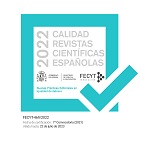Un ensayo para la presente y futura paz de Europa. A través del establecimiento de una dieta, Parlamento o Estado Europeo. Por WILLIAM PENN. Publicado por la Peace Committee of the Society of Friends. Friends House, Euston Road, Londres, N. W.. (RI §413478)

An essaytowards the present and future peace of Europe. By the Establishment of an European Diet, Parliament, or Estates -
Traducción de Gabriela Cobo
El presente ensayo resulta atractivo para cualquier interesado en el periodo de la historia anterior a que los organismos supranacionales para Europa fueran una realidad. Esto es, a todos los interesados en conocer a los teóricos que previeron la necesidad de articular una suerte de Unión Europea capaz de atemperar los conflictos de intereses de las distintas soberanías. William Penn se erige como uno de los precursores de dicha iniciativa a través del presente ensayo ya en 1693.
A pesar de que ninguno de sus argumentos en torno a la libertad de conciencia son del todo originales, lo cierto que es que denotan una verdadera coherencia de pensamiento que merece ser tenida en cuenta por los historiadores. Más aún, su serio intento de poner en práctica su ideario liberal en Pensilvania hace de la obra de Penn en general un interesante estudio para comprender la historia política y religiosa de Inglaterra así como la evolución de la historia constitucional de Norte América.
AL LECTOR. I. DE LA PAZ Y SUS VENTAJAS. II. DE LOS MEDIOS HACIA LA PAZ, LA CUAL ES JUSTICIA EN LUGAR DE LA GUERRA. III. EL GOBIERNO, SU ASCENSO Y SU FINAL BAJO CUALQUIER MODELO. IV. DE LAS CAUSAS DE DIFERENCIA, Y DE LOS MOTIVOS PARA VIOLAR LA PAZ. V. DE LOS TÍTULOS A TRAVÉS DE LOS QUE ESAS DIFERENCIAS PUEDEN PRESENTARSE. VI. SOBRE LA COMPOSICION DE ESTOS ESTADOS IMPERIALES. VII. DE LAS REGULACIONES DEL ESTADO IMPERIAL EN SESIONES. VIII. DE LAS OBJECIONES QUE SE PUEDEN PRESENTAR EN CONTRA DEL PROYECTO. IX. DEL REAL BENEFICIO QUE DERIVA DE ESTA PROPUESTA SOBRE LA PAZ. LA CONCLUSIÓN
The present essay is very attractive to anyone interested in the historical period before supranational organisms for Europe became a reality. In other words, to anyone interested in getting to know the theorists able to foresee the necessity of structuring a sort of European Union capable of moderating possible conflicts of interests coming from the different sovereignties. William Penn emerges through this essay as one of the precursors of such an initiative in 1693.
Even though any of his arguments in relation to freedom of conscience are completely original, the truth is that they let see a sincere coherence of thinking that deservers the attention of historians. Furthermore, his serious attempt of putting all his liberal ideology into practice in Pennsylvania makes Penn´s work as a whole a very interesting study to understand the political and religious history of England and the evolution of constitutional history of North America.
I. OF PEACE AND ITS ADVANTAGES. II. OF THE MEANS OF PEACE, WHICH IS JUSTICE RATHER THAN WAR. III. OF A GENERAL PEACE, OR THE PEACE OF EUROPE, AND THE MEANS OF IT. IV. OF THE CAUSES OF DIFFERENCE, AND MOTIVES TO VIOLATE PEACE. V. OF TITLES, UPON WHICH THOSE DIFFERENCES MAY ARISE. VI. OF THE COMPOSITION OF THESE IMPERIAL STATES. VII. OF THE REGULATIONS OF THE IMPERIAL STATES IN SESSION. VIII. OF THE OBJECTIONS THAT MAY BE ADVANCED AGAINST THE DESIGN. IX. OF THE REAL BENEFITS THAT FLOW FROM. X. THIS PROPOSAL ABOUT PEACE. THE CONOLUSION.

 DIRECTORA
DIRECTORA